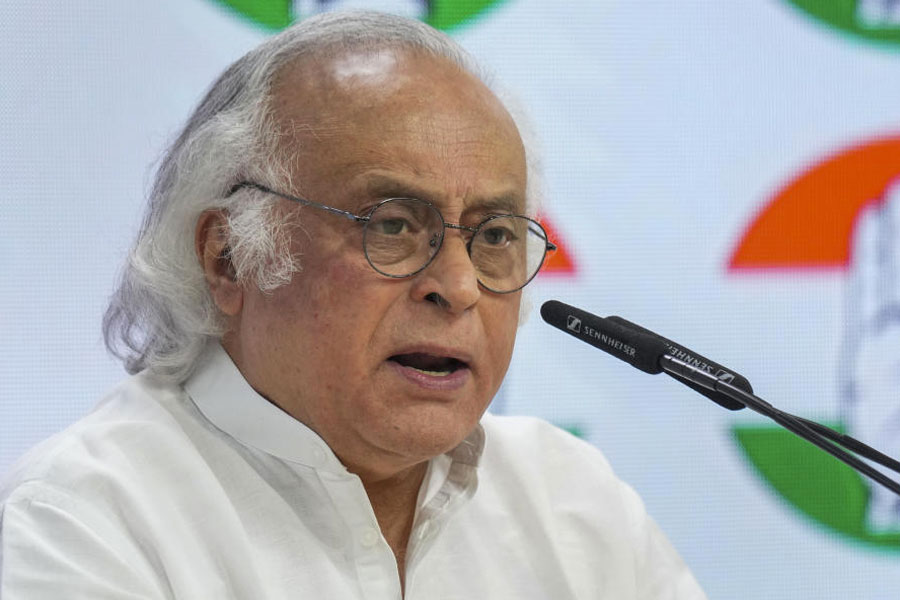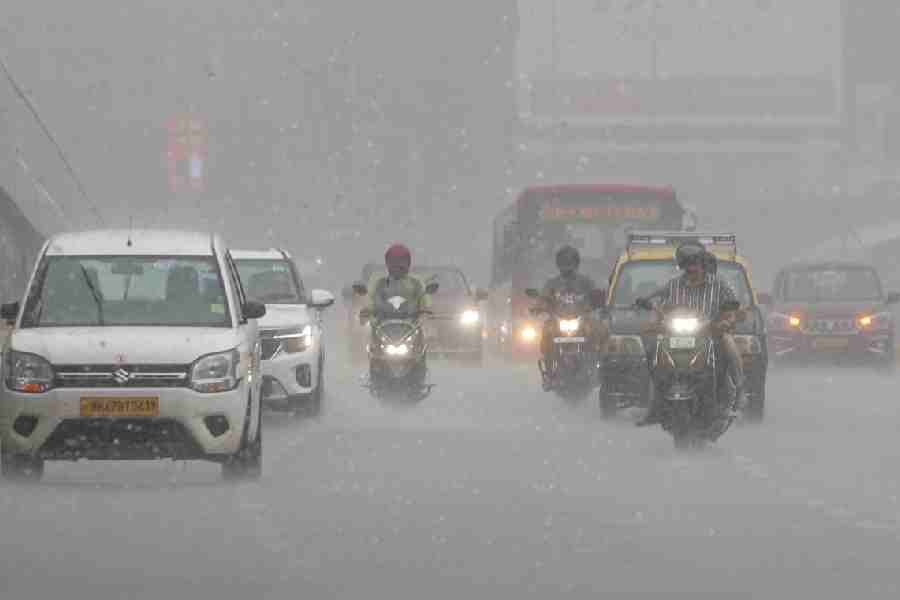 |
 |
 |
| (From top) A view of the Ramnagar Fort; Tourists enjoying a boat ride on the Ganga; Priests wait for devotees at a ghat |
Varanasi initiated me into its crazy beat via chaos. What started as an innocuous, short cycle-rickshaw ride from Assi Ghat to Godowlia, ended up pulling me into the reckless rhythm of the city. Might is right on this shore of the Ganges and that applies specially to the traffic. My rickshaw wallah demonstrated it amply as he took his right foot off the pedal to land a kick on the back of an auto rickshaw that refused him passage. Suddenly, vehicles from three directions converged within inches of one another. And that too, in the middle of the lane, and close on the heels of a young foreign tourist, who exclaimed “My Gawd,” and quite ingloriously jumped to safety.
At Godowlia, we joined the crowds surging towards Dashashwamedh ghat for the Ganga aarti. From chaos to calm, it took but seconds. Those sitting on the well-lit ghat were quiet and expectant. The daily evening ritual of worshipping an ancient, sacred if soiled, river is done by five priests in bright silken attire, with undiluted concentration and perfectly synchronised movements.
It is a magical half hour, filled with the sound of bells and hymns, and the warm smell of burning ghee from shining brass lamps. It could take you back a thousand years, but for the complete stranger next to you who eagerly offers his Yahoo mail ID so you can mail him photographs. You hope, for his sake, your camera will be able to record this eternal connect between a river and a people.
Buddhists connect with Varanasi too, thanks to Sarnath — as peaceful, green and spacious as Varanasi is chaotic, dusty and congested. The Japanese have built their own temple and the Chinese theirs, with distinct architectural styles.
 |
| The historic Sarnath Stupa |
The original Stupa looks sunnier than the smudged photograph in your history book. Under a peepul tree born of a branch of the original tree under which Gautam Buddha had preached his first sermon, now sits a sculptured Buddha with his first five disciples. A moment from history frozen for the devout, who tie multi-coloured prayer flags here. We pause, soaking in the peace as the pink leaves of the peepul whisper gently overhead.
There’s nothing gentle about the April sun, however, as we take an auto to the 18th century Ramnagar Fort, the royal residence. The museum houses vintage cars, silver and ivory palanquins and howdahs. It’s been a while since the rooms had a coat of paint and the broken car windows, a dusting. The armoury includes a signed greeting card from Queen Elizabeth, once a visitor to Ramnagar. There is a huge clock that can tell you the time, week, day, month and year, and also facts about the sun, moon and constellation of stars. But nothing surpasses the exquisite ivory collection.
The way to the Ved Vyasa temple in the Fort is a dark, stone corridor, once the queen’s private passage to the Ganga. It ends suddenly in a magnificent vista of the river. The door to the ghat has red and green stained glass, the balcony above it, made of marble. The bright red temple, goes the legend, was built by Vyasa when Lord Shiva banished him from Kashi.
You do not question the legends in Varanasi, and so, the Chunar Fort built in 56 BC by King Vikramaditya of Ujjain takes on a different hue when the guide shows you the place where Bhartihari, the king’s brother, had buried himself. The Sonwa Mandap, venue for royal weddings, has its dark secret too: an underground prison for defeated kings, with nothing but small, round holes to let in some air.
The conquerors and the conquered are long gone, but the Ganga flows on, temporarily changing direction at Varanasi from south to north. No trip to the city at the confluence of Varuna, Asi and Ganga is complete without a boat ride. Dusk leads to a pitch dark night on the ghats. The only sound on our return journey is the slow, rhythmic splashing of the oars.
And then, from the darkness emerges a tall figure in a white dhoti. Walking along the Nishadraj Ghat, he breaks into a song in praise of Shiva. Casual, effortless, the melody in his strong voice wafts across the waters. A mere two lines, then the night wraps itself gently around him and the ghats are deserted again.
Varanasi grows on you, a friend had said. After all the haggling with cut-throat rickshaw wallahs, smart-talking shop owners and priests at the Kashi Vishwanath temple, the heat, the dust and the night-long wait at the platform for the train back home, Varanasi is a city I am glad to get away from. Or so it seems.
Deep within, though, the pink peepul leaves stir suddenly as a hot wind blows, and the dark, sultry night brings back the haunting voice. Behind my tired eyelids, a hundred little lamps float on a gently heaving river.
Ready reckoner
 |
Getting There: There are many trains from Calcutta to Mughalsarai Junction. Change to an auto-rickshaw for Varanasi. The closest railway station is Varanasi Junction, but the direct train from Howrah to Varanasi Junction (Vibhuti Express) has a reputation for delays.
The best time to visit: Winter is the best time for a visit.











